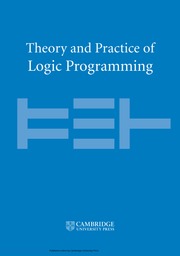Article contents
A uniform approach to logic programming semantics
Published online by Cambridge University Press: 10 January 2005
Abstract
Part of the theory of logic programming and nonmonotonic reasoning concerns the study of fixed-point semantics for these paradigms. Several different semantics have been proposed during the last two decades, and some have been more successful and acknowledged than others. The rationales behind those various semantics have been manifold, depending on one's point of view, which may be that of a programmer or inspired by commonsense reasoning, and consequently the constructions which lead to these semantics are technically very diverse, and the exact relationships between them have not yet been fully understood. In this paper, we present a conceptually new method, based on level mappings, which allows to provide uniform characterizations of different semantics for logic programs. We will display our approach by giving new and uniform characterizations of some of the major semantics, more particular of the least model semantics for definite programs, of the Fitting semantics, and of the well-founded semantics. A novel characterization of the weakly perfect model semantics will also be provided.
Keywords
Information
- Type
- Regular Papers
- Information
- Copyright
- © 2005 Cambridge University Press
- 5
- Cited by

